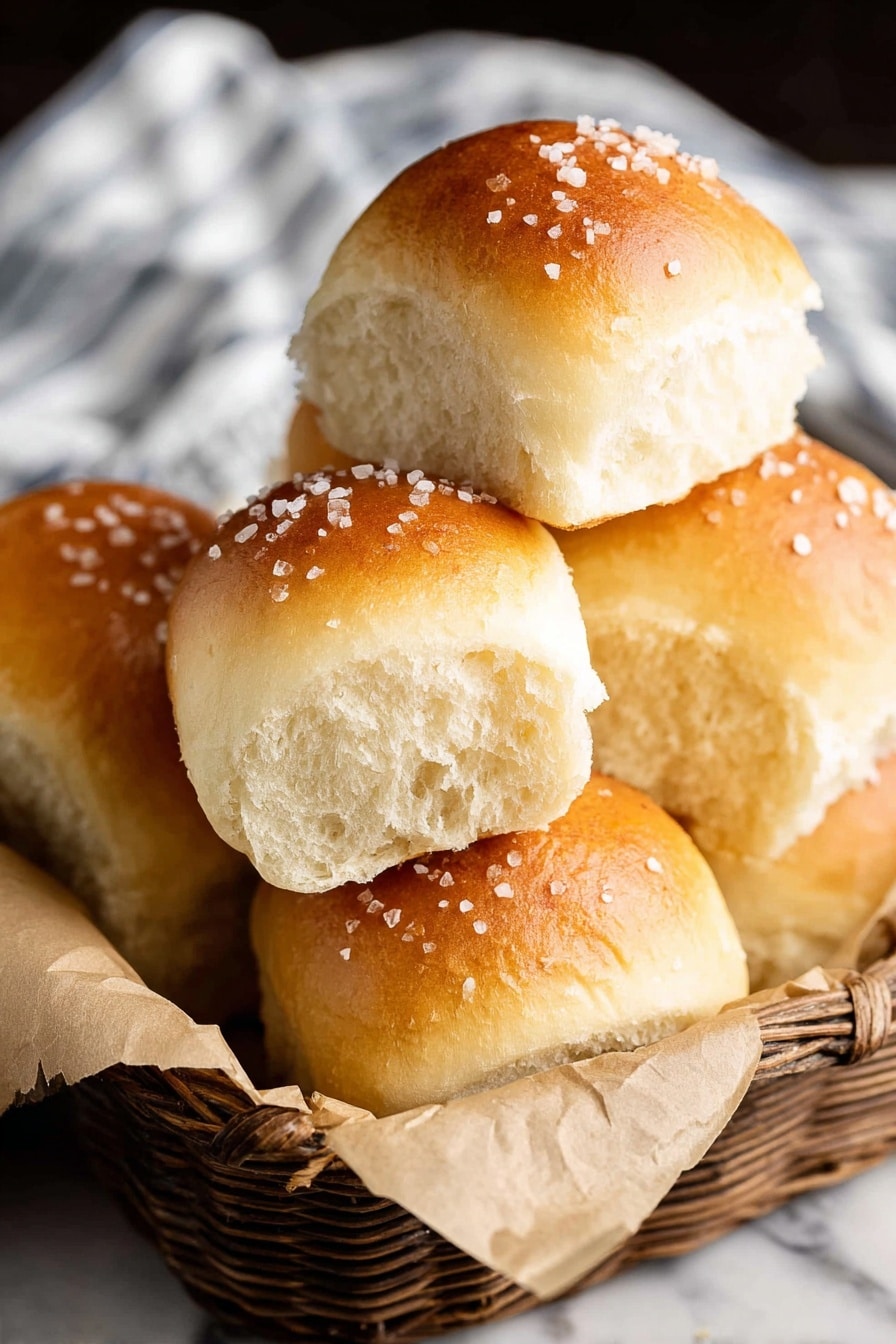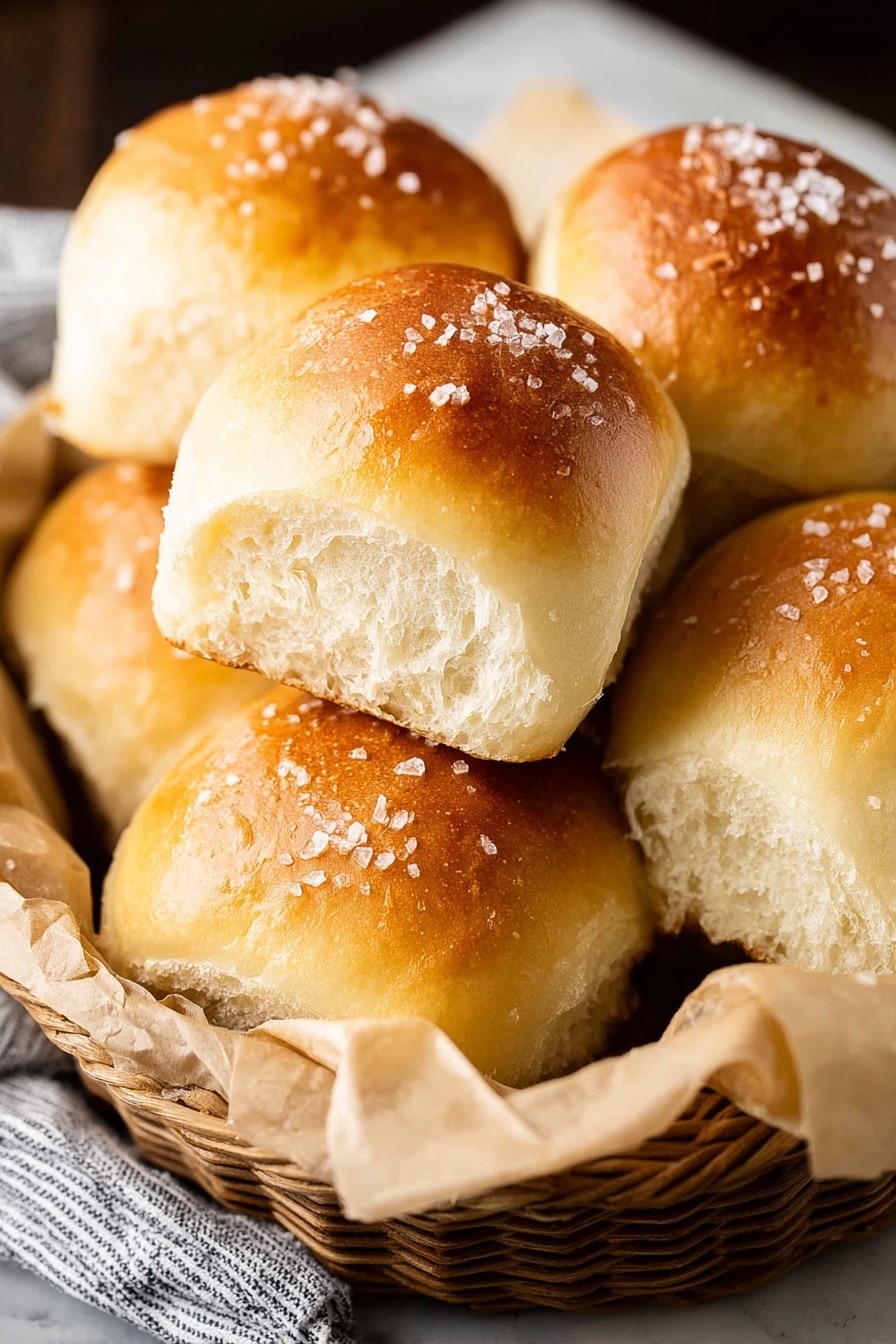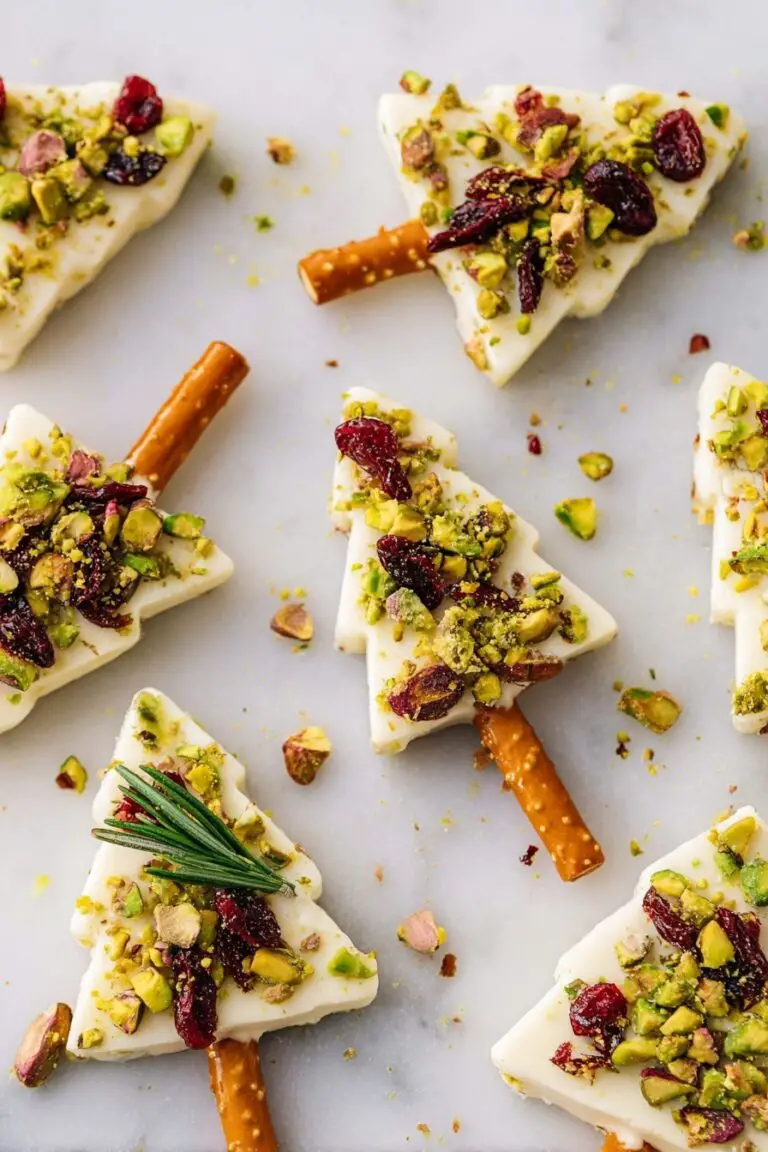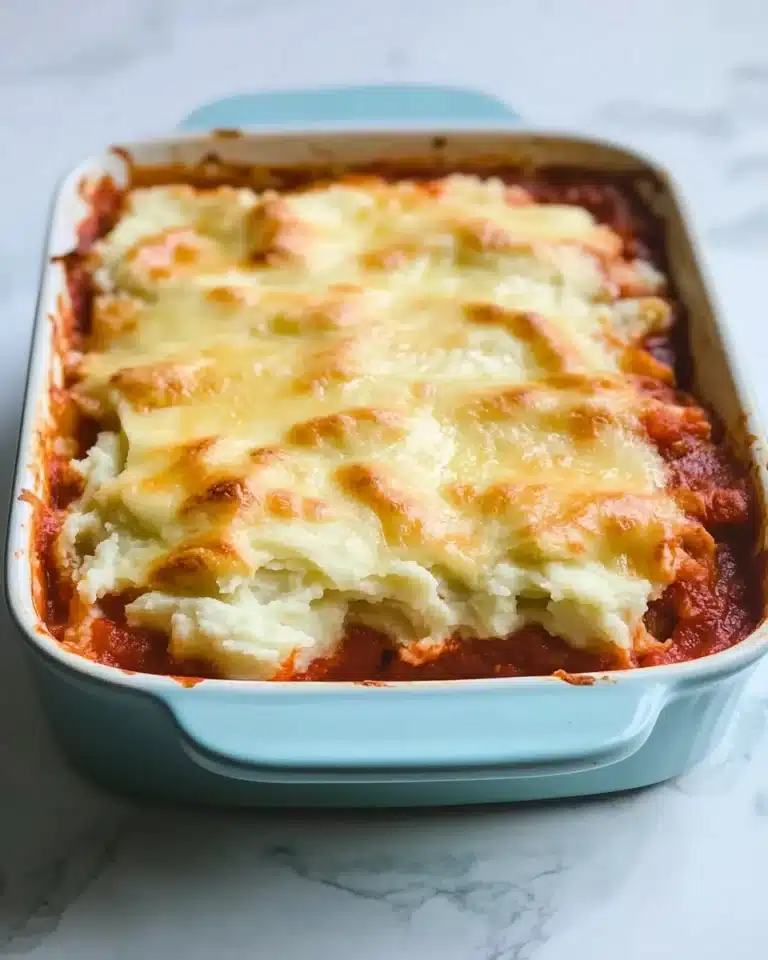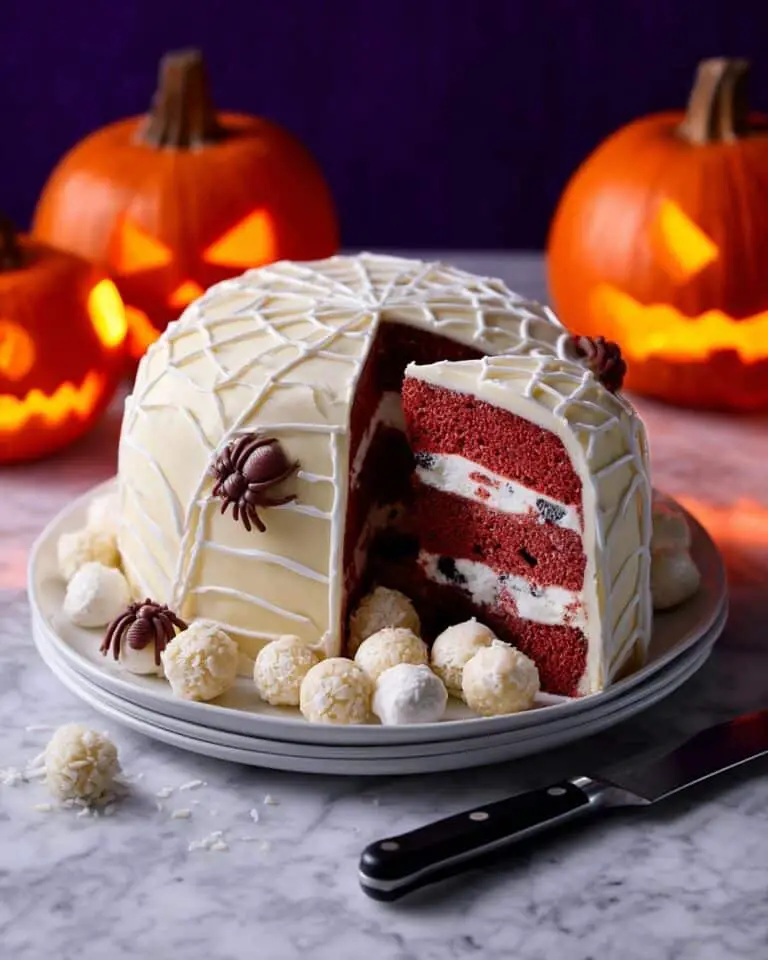If you’ve ever wished for soft, fluffy, and buttery bread right out of your oven, you’re going to love this. I’m excited to share my Best Homemade Dinner Rolls Recipe that has become a staple in my kitchen. These rolls turn out perfectly tender with just the right amount of golden crust, and they’re surprisingly easy to make! Whether you’re prepping for a holiday feast or just craving some warm bread to go with dinner, this recipe will quickly become your go-to.
Why You’ll Love This Recipe
- Soft and Fluffy Texture: The rolls come out perfectly tender, making them irresistible fresh from the oven.
- Simple Ingredients: You probably have everything you need already in your pantry and fridge.
- Perfect for Any Occasion: From weeknight dinners to holiday spreads, these rolls impress every time.
- Easy to Customize: You can tweak the recipe or toppings based on your preferences without losing that classic flavor.
Ingredients You’ll Need
All the ingredients in this Best Homemade Dinner Rolls Recipe come together to create a soft, rich dough that’s easy to work with. The combination of butter, milk, and egg adds extra tenderness and flavor that you’ll notice in every bite.
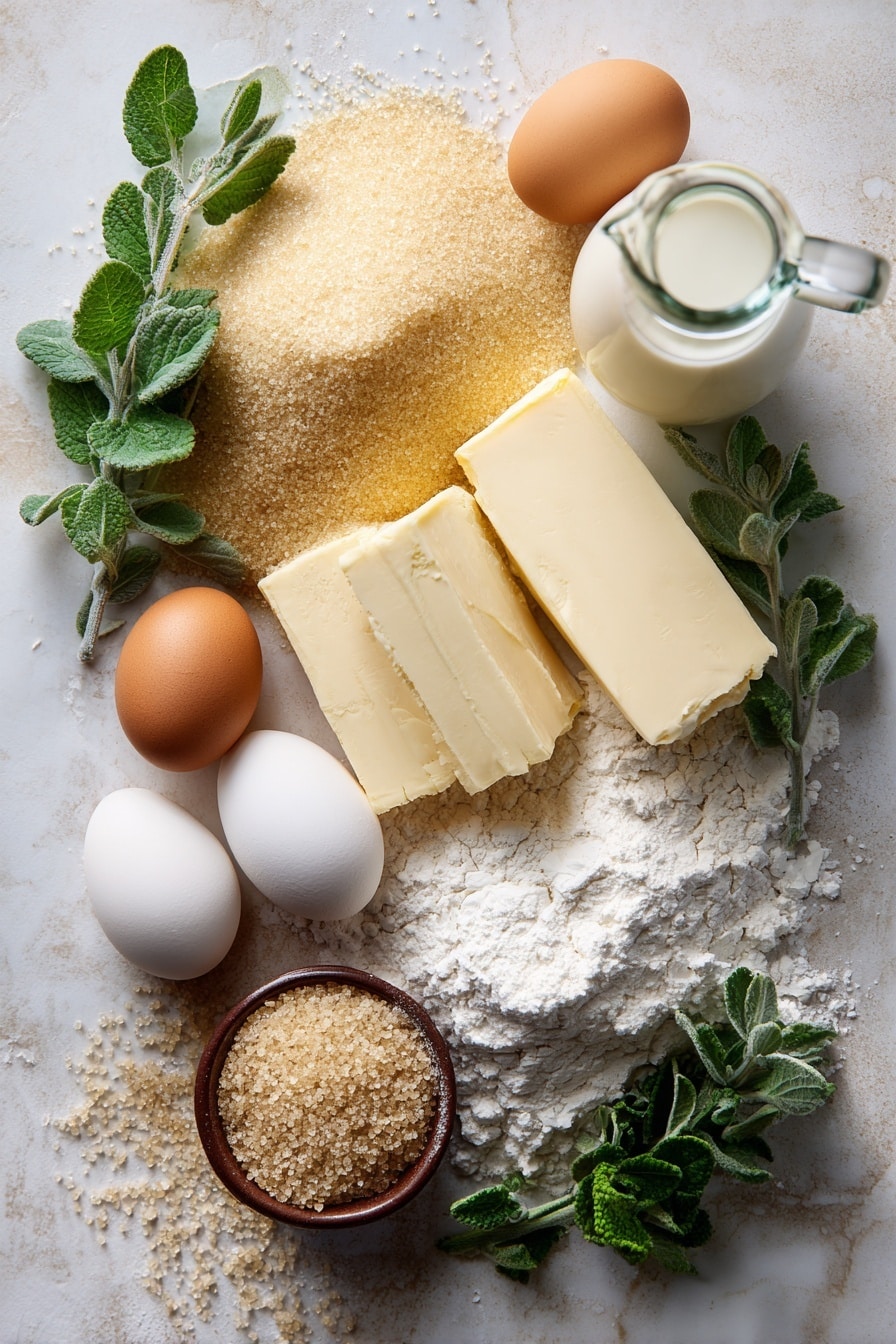
- Warm Water: Activates the yeast, so make sure it’s just right—not too hot or cold.
- Granulated Sugar: Feeds the yeast and adds a touch of sweetness to balance the savory elements.
- Active Dry Yeast: The magic behind the rise—always check expiry for best results.
- Salted Butter: Melted and cooled butter makes the dough tender and adds rich flavor.
- Whole Milk: Using whole milk gives these rolls a soft crumb and lovely richness.
- Egg: Helps bind and boosts the dough’s softness and color.
- Sea Salt: Adds flavor depth and a slight crunch when sprinkled on top.
- All-Purpose Flour: The backbone of the dough, provides structure while keeping rolls light.
Variations
I love how versatile these dinner rolls are—you can easily make them your own with a few tweaks. Over time, I tried a couple of variations that brought something new to the table and kept my family excited every time.
- Garlic Herb Rolls: Adding minced garlic and fresh herbs like rosemary to the dough gives these rolls an irresistible savory twist that my family begs for.
- Whole Wheat Option: For a heartier roll, swap half the all-purpose flour with whole wheat flour—just know it’ll change the texture a bit.
- Honey-Sweetened: Replace the sugar with honey for a subtle floral sweetness, perfect for brunch or a tea party.
- Dairy-Free: Use plant-based milk and a dairy-free butter alternative—these changes keep the dough tender without compromising flavor.
How to Make Best Homemade Dinner Rolls Recipe
Step 1: Proof Your Yeast to Get the Dough Going
Start by mixing the warm water, sugar, and active dry yeast in the bowl of your stand mixer fitted with the dough hook. I usually keep this in a warm spot, like near my stove, to help the yeast get nice and foamy—this usually takes 5 to 10 minutes. If it doesn’t foam, your yeast might be old or the water temperature might’ve been off, so swap it out and try again.
Step 2: Combine Your Ingredients and Start Kneading
Once that yeast mixture is bubbly, stir in your melted butter, milk, and beaten egg. Then add 3 cups of flour plus sea salt. Turn on your mixer to a low speed and let the dough hook do its magic kneading. The dough should be a slightly tacky ball that pulls away from the sides of the bowl. Add more flour gradually as needed—but careful not to add too much, or your rolls risk turning out dense.
Step 3: Let Your Dough Rise Until Doubled
Transfer this dough ball to an oiled bowl, cover it with a damp cloth, and tuck it somewhere warm to rise. I usually place mine on top of the fridge or inside my oven with just the light on. This typically takes about an hour, and you’ll know it’s ready when the dough has doubled in size and looks light and airy.
Step 4: Shape Your Rolls and Let Them Rise Again
After the first rise, punch the dough down gently to deflate it. Then, flour your hands and divide the dough into 12 equal pieces—using a kitchen scale helps ensure even-sized rolls. Roll each piece into a smooth ball and arrange them evenly in a parchment-lined 9×13” pan. Cover again with a damp cloth and let them rise until doubled, about 30 to 60 minutes. Just a heads up: don’t let the towel touch the tops of the rolls, or it can disturb their shape as they rise.
Step 5: Bake and Finish with Butter and Salt
Preheat your oven to 375°F about halfway through the second rise. Bake the rolls for 25-30 minutes, or until golden brown on top and they sound hollow when tapped. If you’ve got an instant-read thermometer, aim for an internal temperature between 185-190°F. The moment they come out, brush them generously with melted butter and then sprinkle with coarse sea salt—it adds that perfect finishing touch that keeps me coming back for more. Let them cool slightly, but honestly, these are best enjoyed warm.
Pro Tips for Making Best Homemade Dinner Rolls Recipe
- Perfect Temperature: I learned the hard way that water that’s too hot kills the yeast—aim for just warm (around 105°F) for the best rise.
- Grease Your Bowl Well: Prevent your dough from sticking by generously oiling your bowl before the first rise—it makes handling easier.
- Use a Kitchen Scale: Weighing dough balls ensures all rolls bake evenly and look professional—this little trick changed my baking game.
- Avoid Overflouring: Adding too much flour can make rolls dense, so add it slowly and judge by feel—you want a slightly tacky dough.
How to Serve Best Homemade Dinner Rolls Recipe
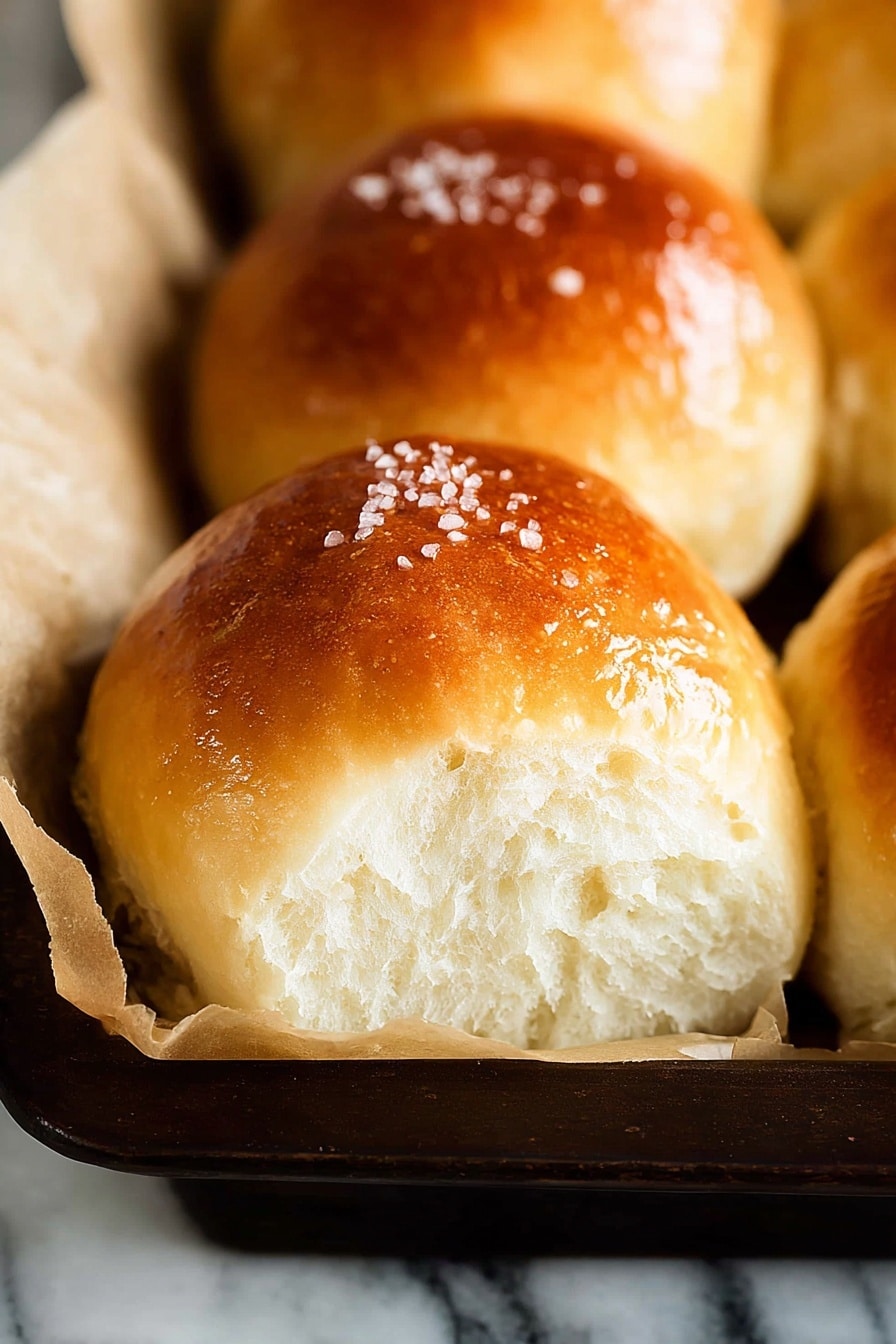
Garnishes
I usually stick to the classic combo of melted butter and a sprinkle of coarse sea salt—it’s simple but elevates the rolls in the best way. Occasionally, I’ll toss on some fresh herbs like finely chopped rosemary or thyme right after brushing the butter, which adds a subtle aromatic touch that my guests adore.
Side Dishes
These rolls are my first pick next to hearty dishes like roast chicken, creamy soups, or homemade chili. They’re great for mopping up sauces and gravies, and honestly, my family goes crazy for them alongside mashed potatoes and green beans.
Creative Ways to Present
For special occasions, I like arranging the rolls into pull-apart clusters sprinkled with a bit of extra herb butter on top before baking. Another fun trick is to serve them in mini paper cups or line them up in a wicker basket with a cozy cloth napkin for a rustic presentation that feels extra special.
Make Ahead and Storage
Storing Leftovers
Once cooled, I store leftover rolls in an airtight container at room temperature. They usually stay soft and delicious for about 3 days—perfect for quick snacks or sandwiches the next day. If you notice they’re starting to dry out, warming them slightly with a bit of moisture helps bring back that softness.
Freezing
One of the best tricks I’ve discovered is freezing the shaped dough balls before their second rise. Just cover your baking pan tightly with plastic wrap and foil, then freeze for up to a month. When ready to bake, thaw them at room temperature until fully risen, then bake as usual. You can also bake them straight from frozen by adjusting the temperature and time—this flexibility is a lifesaver for busy weeks.
Reheating
I warm leftover rolls in a low oven (around 300°F) wrapped in foil to keep them moist, usually for 10-15 minutes. If I’m in a hurry, the microwave wrapped in a damp paper towel for 15-20 seconds works in a pinch but can make them a bit chewy, so I prefer the oven method when possible.
FAQs
-
Can I use instant yeast instead of active dry yeast?
Absolutely! If you use instant yeast, you can skip the proofing step since it activates faster. Just mix it in with the dry ingredients and proceed with the recipe. Keep in mind, the rising time might be slightly shorter.
-
Why did my rolls turn out dense?
Density usually happens if the dough didn’t rise enough, the yeast was old, or too much flour was added. Make sure to proof your yeast properly and avoid over-flouring the dough—aim for a slightly tacky ball for soft, light rolls.
-
Can I make these rolls vegan?
Yes, substitute the butter with a plant-based alternative, use non-dairy milk like almond or oat milk, and replace the egg with something like flax egg or commercial egg replacer. While the texture changes slightly, they still turn out delicious!
-
How do I store leftover rolls to keep them fresh longer?
Keep them in an airtight container at room temperature for up to 3 days. For longer storage, freeze them in a ziplock bag or container for up to 2 months. When ready, thaw and warm before serving.
Final Thoughts
This Best Homemade Dinner Rolls Recipe has earned a permanent spot in my recipe binder because it’s reliable, straightforward, and always yields fluffy, buttery rolls that everyone loves. Whether you’re a beginner or a seasoned baker, I truly believe you’ll enjoy how simple and rewarding this is to make. Give it a go—your kitchen (and your dinner guests) will thank you!
Print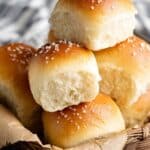
Best Homemade Dinner Rolls Recipe
- Prep Time: 10 minutes
- Cook Time: 30 minutes
- Total Time: 2 hours 40 minutes
- Yield: 12 dinner rolls
- Category: Bread
- Method: Baking
- Cuisine: American
Description
These best homemade dinner rolls are soft, fluffy, and buttery, perfect for any meal or occasion. Made from scratch with simple ingredients like yeast, flour, milk, and butter, they are easy to prepare and yield a batch of 12 golden-brown rolls with a tender crumb and deliciously rich flavor, topped with melted butter and a sprinkle of coarse sea salt.
Ingredients
Dough
- ½ cup warm water (about 105 degrees F)
- ¼ cup granulated sugar
- 1 tablespoon active dry yeast
- 6 tablespoons salted butter (melted and cooled)
- 1 cup whole milk (room temperature)
- 1 egg (room temperature, lightly beaten)
- ½ tablespoon sea salt
- 3-4 cups all-purpose flour
Topping
- 2 tablespoons salted butter (melted)
- Coarse sea salt (for sprinkling)
Instructions
- Prepare the Pan: Line a 9×13” baking pan with parchment paper and set aside to ensure easy removal of the rolls after baking.
- Proof the Yeast: In the bowl of a stand mixer fitted with a dough hook, mix warm water, sugar, and active dry yeast. Let sit for 5-10 minutes until the mixture becomes foamy, indicating the yeast is active.
- Make the Dough: Add melted and cooled butter, room temperature whole milk, and lightly beaten egg to the yeast mixture and stir to combine thoroughly.
- Add Flour and Salt: Gradually add 3 cups of all-purpose flour along with ½ tablespoon of sea salt to the mixture. Knead the dough using the dough hook, adding additional flour as needed until a slightly tacky, smooth dough ball forms.
- First Rise: Lightly grease a large bowl with butter or oil, place the dough inside, and cover with a damp cloth. Set it in a warm place to rise for about 1 hour or until it has doubled in size.
- Degas and Shape: Once risen, flour your hands and gently squeeze the dough to remove trapped gas. Divide the dough into 12 equal portions by weight, shaping each into a smooth ball using floured hands.
- Arrange in Pan: Place the 12 dough balls evenly spaced in the prepared baking pan in 4 rows of 3. Cover with a damp towel without touching the dough and let rise again in a warm place until doubled in size, about 30-60 minutes.
- Preheat Oven: When the rolls have risen about halfway through the second rise, preheat your oven to 375 degrees F.
- Bake: Bake the rolls for 25-30 minutes until golden brown on top and hollow sounding when tapped or when their internal temperature reaches 185-190 degrees F.
- Butter and Season: Remove rolls immediately from the oven and brush generously with melted butter. Sprinkle with coarse sea salt while still warm.
- Cool and Serve: Allow the rolls to cool slightly before serving warm. Enjoy their fluffy and buttery texture right away.
Notes
- Ingredient Substitutions: Whole milk can be substituted with 2% milk or half-and-half for a richer texture. For flour, all-purpose is recommended but whole wheat can be used for a healthier option. Granulated sugar can be replaced with honey for natural sweetness. Unsalted butter can be used instead of salted.
- Make Ahead & Freezing: After shaping the rolls but before the second rise, freeze the covered dough balls in the baking pan for up to 1 month. To bake from frozen, let dough come to room temperature and rise fully, then bake as directed, or bake directly from freezer starting at 325°F for 25 minutes, then increase to 375°F for another 10 minutes.
- Storage: Store leftover baked rolls in an airtight container at room temperature for up to 3 days. For longer storage, freeze baked rolls in an airtight container or ziplock bag for up to 2 months.
Nutrition
- Serving Size: 1 dinner roll
- Calories: 160
- Sugar: 4 g
- Sodium: 190 mg
- Fat: 6 g
- Saturated Fat: 3.5 g
- Unsaturated Fat: 2 g
- Trans Fat: 0 g
- Carbohydrates: 22 g
- Fiber: 1 g
- Protein: 4 g
- Cholesterol: 25 mg

